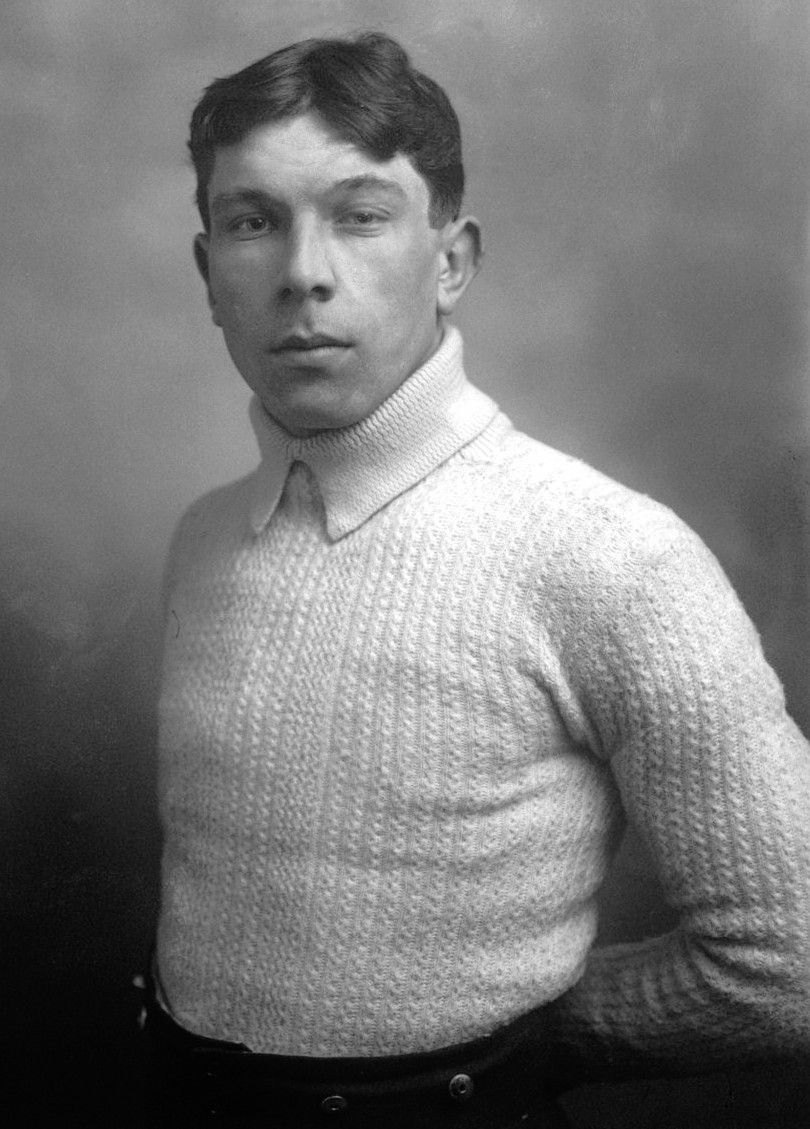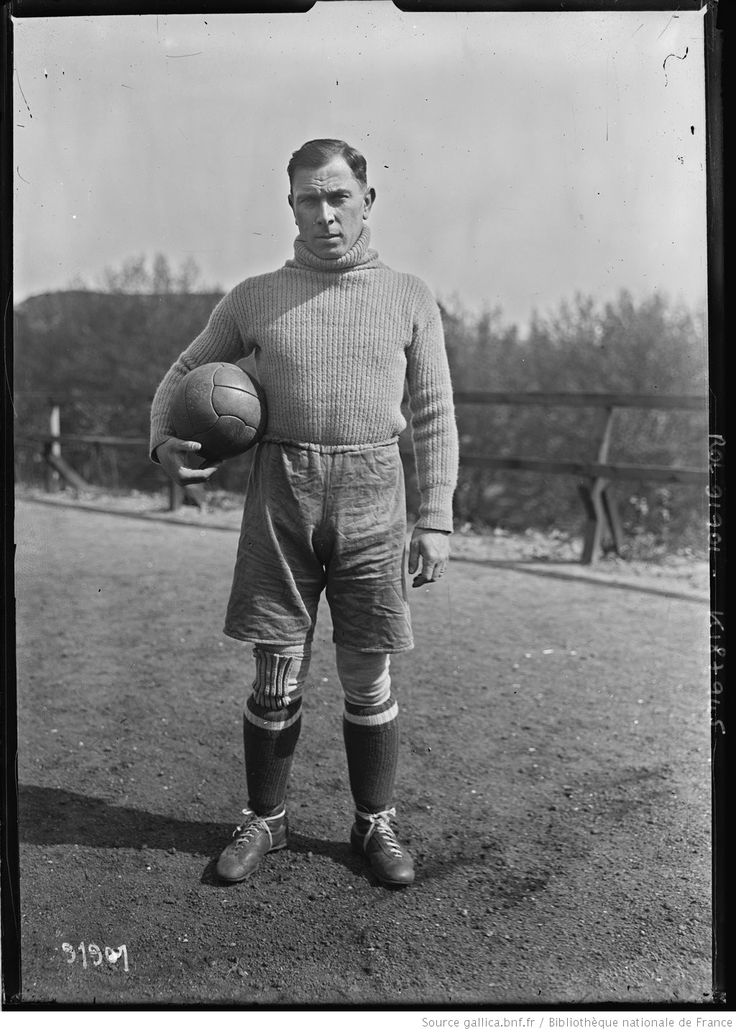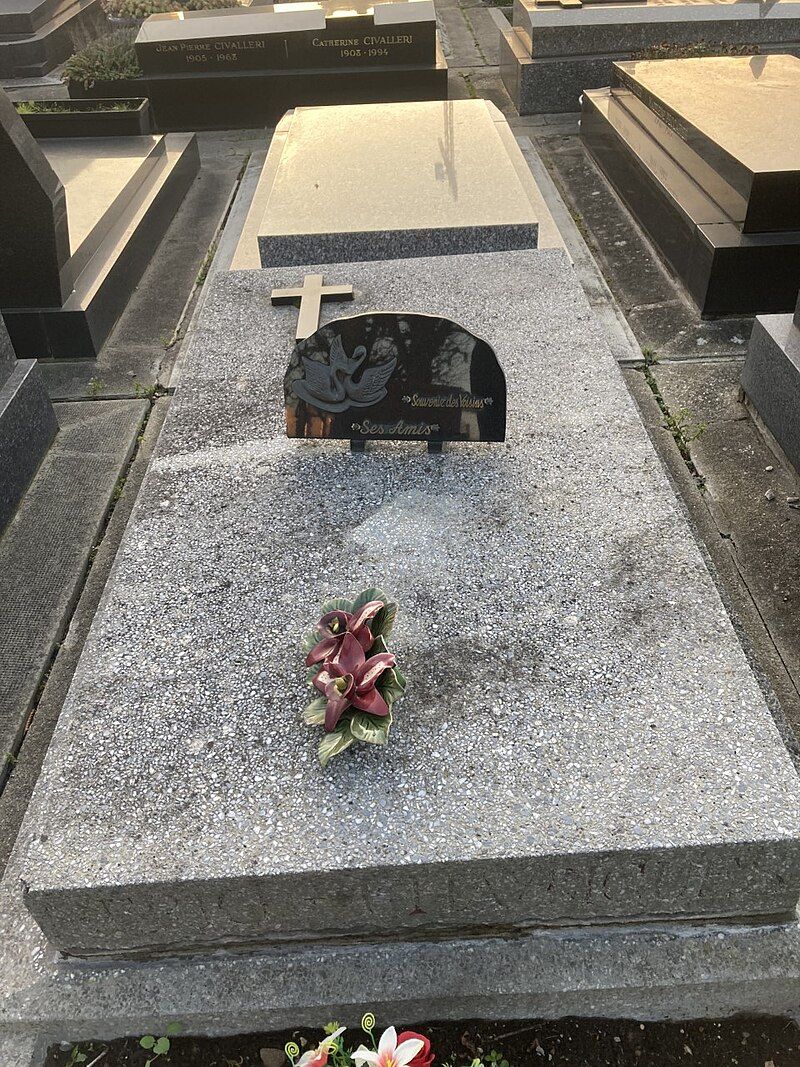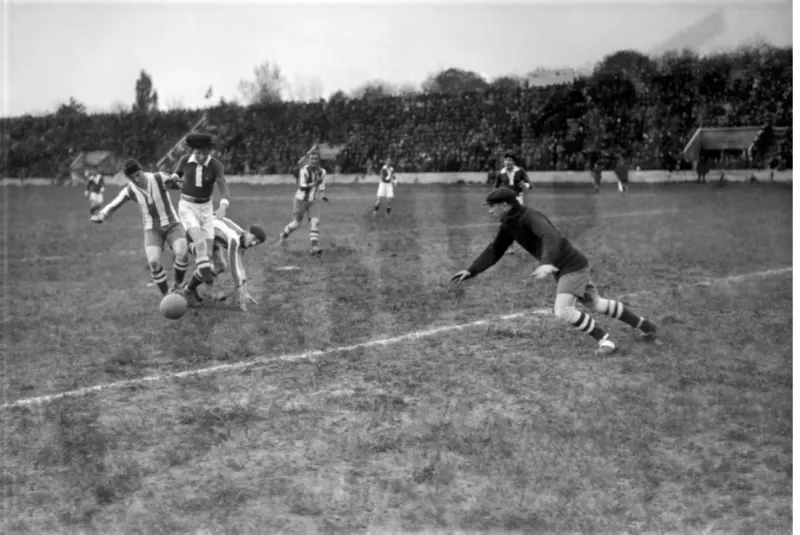The man credited with ‘the first diving save’ was a goalkeeping innovator from France…
Header image via Une autre histoire du foot.
In a previous piece for Goalkeeper.com, I looked back on an article from 1913 by French writer, Henri Beau, which profiled the ‘perfect goalkeeper’ from 100 years ago. At the end of the article, he goes on to mention the best French goalkeeper of the era, Pierre Chayrigues.
According to Beau, Chayrigues was without doubt ‘the most wonderful player we have had in France’ and possessed ‘all the required qualities to the highest degree, and his agility…is legendary’. This caught my attention and inspired me to dig deeper into Chayrigues’ career.
What I found was the story of a goalkeeping pioneer.
The rules of engagement for goalkeepers were very different in 1913 to now, with none of the protections that we are used to today. It was commonplace for goalkeepers to be physically charged by strikers, attempting to knock them into their own goal, or to dislodge the ball from their grip.
Until that point, goalkeepers had preferred the comforts of home, staying on their line, and shuffling across to make a save, in stark contrast to the all-action style we see now. That is, until Chayrigues came along and changed the game.

Chayrigues was a prodigious talent, and remains the youngest goalkeeper to represent France, making his debut at 19 while playing for Red Star Paris. At school he had been a keen gymnast, and his extravagant approach to goalkeeping set him apart from his peers.
Chayrigues’ first taste of football came in hotly contested inter-form matches at school, where they played with balls made of old fabric offcuts. Chayrigues always played in goal, and stated in an interview that his determination to win came from these games, where the losers had to pay money into a pot to buy the first rubber ball for the school.
His style of play was influenced by his size. Chayrigues was small, even by the standards of the day, when ‘keepers were not the giants we see today. So, he had to use other qualities, such as his courage, determination and agility, to make up for what he lacked in size.
Chayrigues was the first to use his area in the way which modern goalkeepers do. Despite the threat of being charged, he would rush off his line, diving at the feet of strikers to smother the ball before they could get a shot away. When corners were swung into the box, he would leave his line and punch the ball away. This is something we see every weekend now, but Chayrigues did it first.
In 1913, he represented a French Select XI against a Football Association XI, who had travelled from England for an exhibition game, and it was in this game that he came to prominence across the Channel, and revolutionised goalkeeping.
A heavy defeat was expected for the French side, against what Beau described as 'our English masters'. In footballing terms, France was a long way behind their neighbours at this stage. But they had not imagined they would be coming up against a player like Chayrigues. Although the English side won 4-1, Chayrigues caught the eye.

In fact, Chayrigues had been told by the French management not to get up to his usual tricks in front of the British strikers, according to French paper L’Auto (now L’Equipe). In the opening exchanges, Chayrigues stopped a shot from two yards out which seemed certain to find the net. L’Auto described his reflexes as extraordinary.
Then, moments later, striker Hoare sent the ball towards the top corner, seemingly out of reach of any goalkeeper. But Chayrigues was no normal goalkeeper. He launched himself at the ball, diving at full stretch and palming the ball away.
Incredibly, it was credited as ‘the first diving save’, and was described in L’Auto as genius. Though this is unlikely to be literally true, it is a significant testament to Chayrigues' innovative style that such an action warranted the publication of such a phrase.
Chayrigues’ reputation was growing. He had already received offers to go and play in Italy after a stellar showing in an international in 1912, but now offers from abroad were becoming commonplace.
Later in 1913, Tottenham Hotspur toured France and played an exhibition against select French side. Chayrigues was one of the star attractions. Although Spurs won 2-1, the scoreline was much closer than expected and this was largely thanks to “Pierrot”.
Reports spoke about Chayrigues in glowing terms: “Chayrigues was the big game Chayrigues, several of his stops were astonishing in their boldness and precision”, praising Chayrigues for his “incredible virtuosity”. The English press also praised Chayrigues, with the Evening Sentinel citing his performance as “one of the redeeming features of the match”.
According to Chayrigues, in an interview for The Aces of Sport, the game against Spurs was “the best game of my life”. The Tottenham directors who watched the game are quoted in L’Auto, singling Chayrigues out for praise. They were so impressed that they cornered Chayrigues on the pitch after the game to offer him a transfer to Spurs.

“They offered me a signing on fee of £1,000 and £10 per match. What temptation! It was a contract worth 40,000 Francs in the first year”. This, when compared with the 6,000 Francs a year contract he had signed in 1912, was a huge pay rise.
However, Chayrigues did not take up the contract. It is unclear why, exactly, but fate certainly played a part. A serious injury ended his season after Red Star toured Portugal, and then he was called up for military service in November 1913, although he was allowed to continue to play for Red Star and France until the First World War broke out.
Like so many players of his age, Chayrigues’ best years were cut short by the conflict and, although he returned to playing after the war, a serious arm injury meant he had to pick and choose his appearances. He won 21 French caps, just the third player to gain more than 20 caps and was part of the French side that appeared at the 1924 Olympics.
He retired in 1927, after a series of serious injuries, having left an indelible mark on football. Pierre Chayrigues is regarded in France as the first modern goalkeeper and is a true goalkeeping pioneer.








